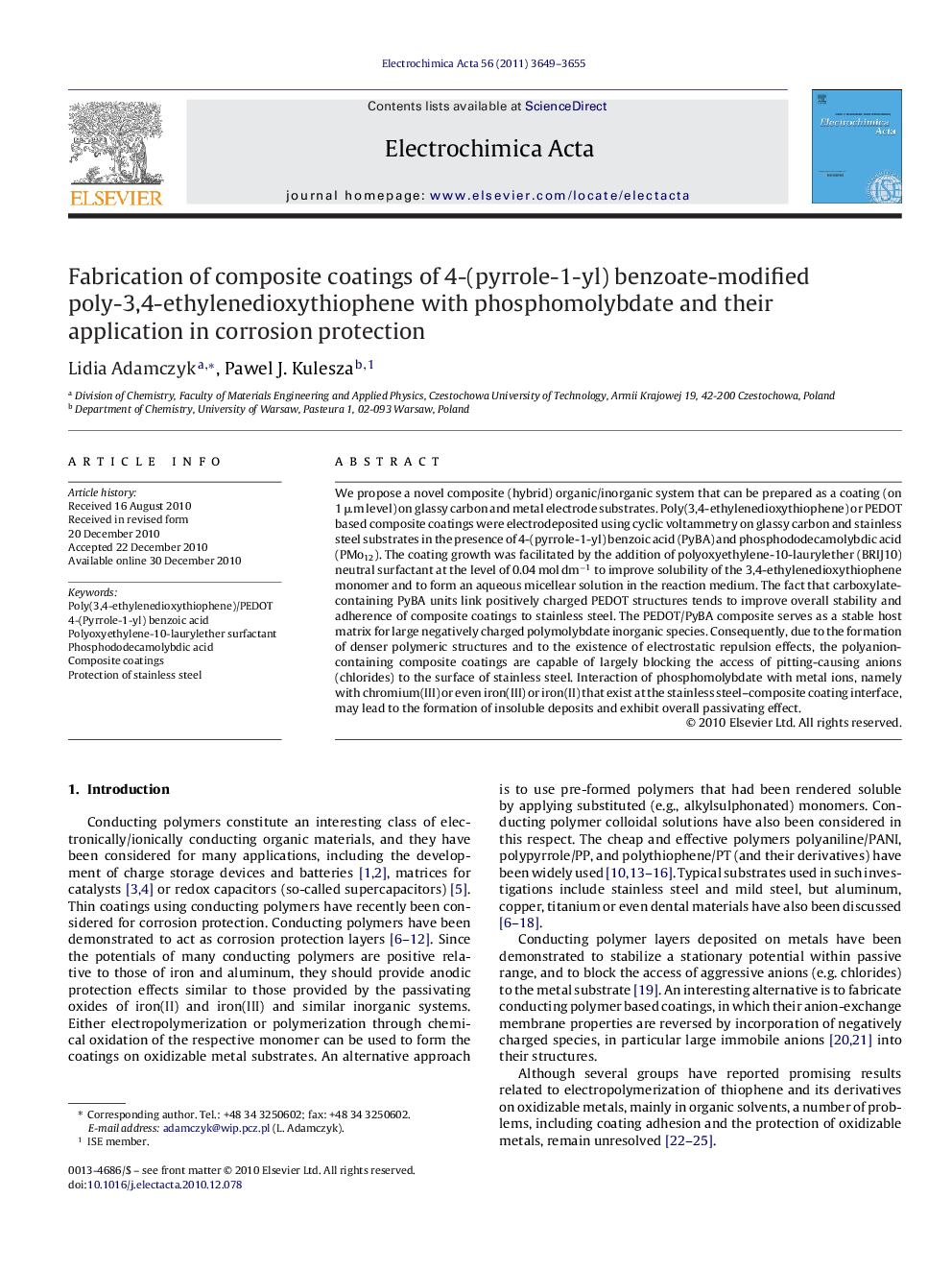| Article ID | Journal | Published Year | Pages | File Type |
|---|---|---|---|---|
| 190186 | Electrochimica Acta | 2011 | 7 Pages |
We propose a novel composite (hybrid) organic/inorganic system that can be prepared as a coating (on 1 μm level) on glassy carbon and metal electrode substrates. Poly(3,4-ethylenedioxythiophene) or PEDOT based composite coatings were electrodeposited using cyclic voltammetry on glassy carbon and stainless steel substrates in the presence of 4-(pyrrole-1-yl) benzoic acid (PyBA) and phosphododecamolybdic acid (PMo12). The coating growth was facilitated by the addition of polyoxyethylene-10-laurylether (BRIJ10) neutral surfactant at the level of 0.04 mol dm−1 to improve solubility of the 3,4-ethylenedioxythiophene monomer and to form an aqueous micellear solution in the reaction medium. The fact that carboxylate-containing PyBA units link positively charged PEDOT structures tends to improve overall stability and adherence of composite coatings to stainless steel. The PEDOT/PyBA composite serves as a stable host matrix for large negatively charged polymolybdate inorganic species. Consequently, due to the formation of denser polymeric structures and to the existence of electrostatic repulsion effects, the polyanion-containing composite coatings are capable of largely blocking the access of pitting-causing anions (chlorides) to the surface of stainless steel. Interaction of phosphomolybdate with metal ions, namely with chromium(III) or even iron(III) or iron(II) that exist at the stainless steel–composite coating interface, may lead to the formation of insoluble deposits and exhibit overall passivating effect.
